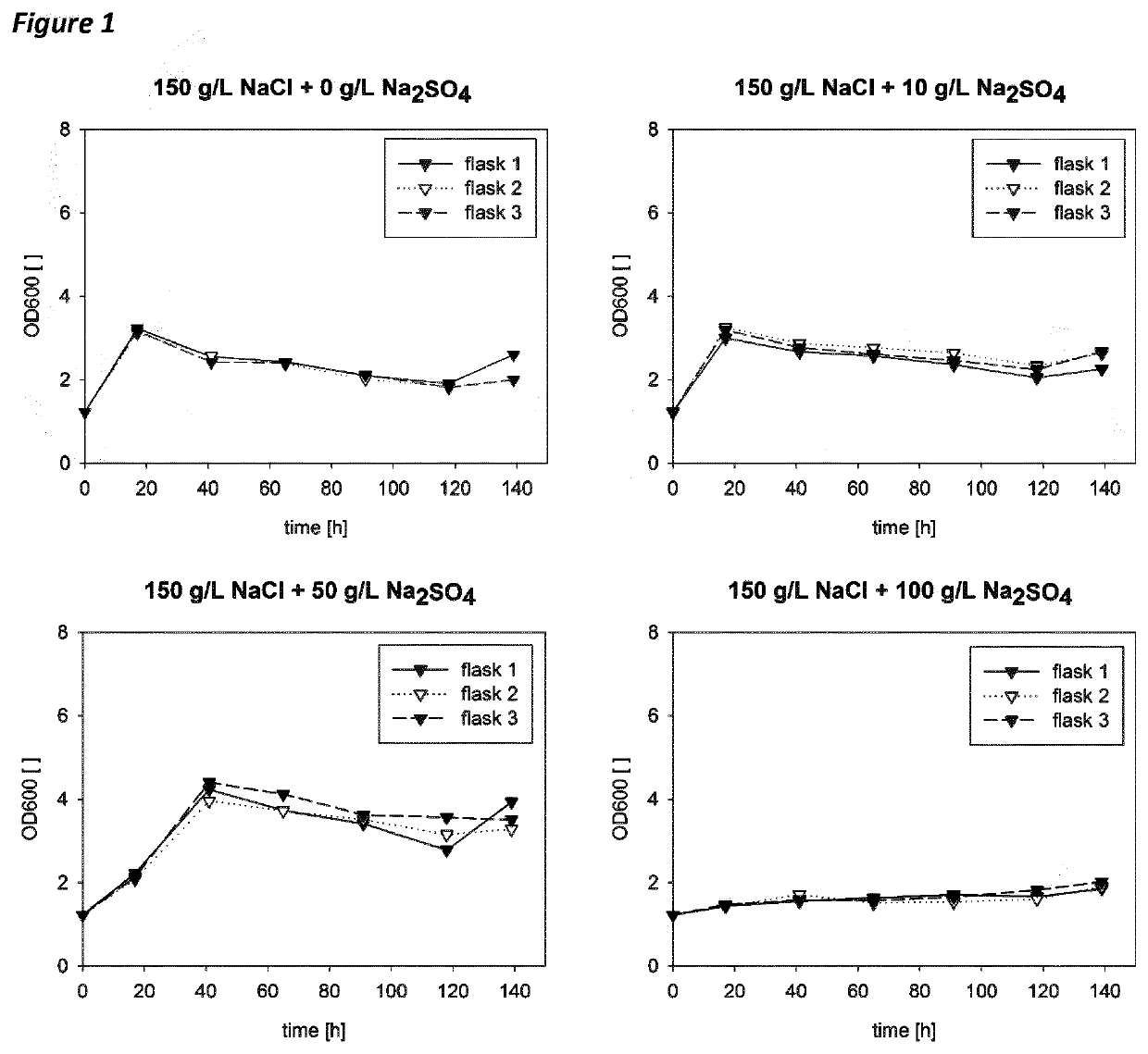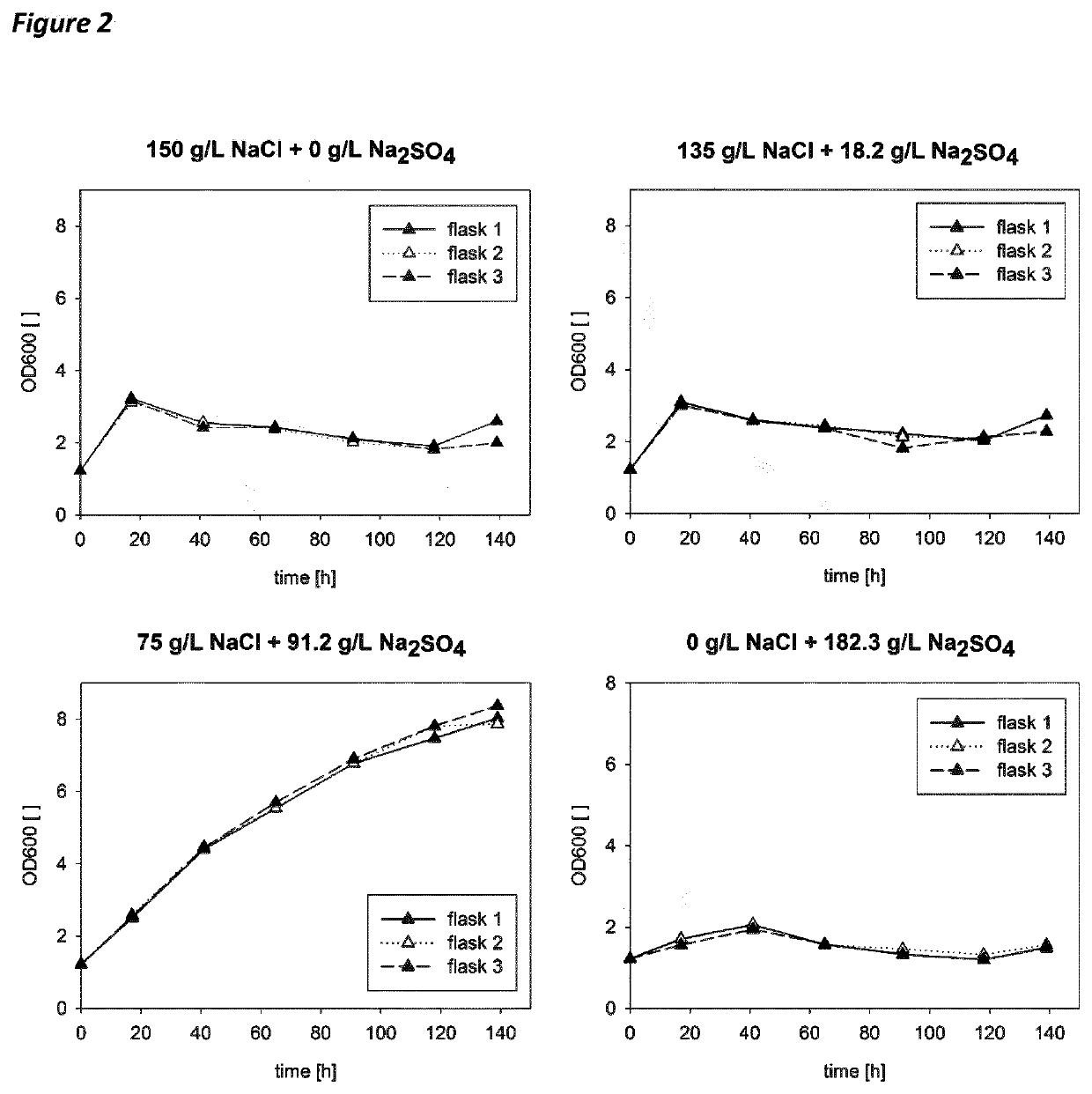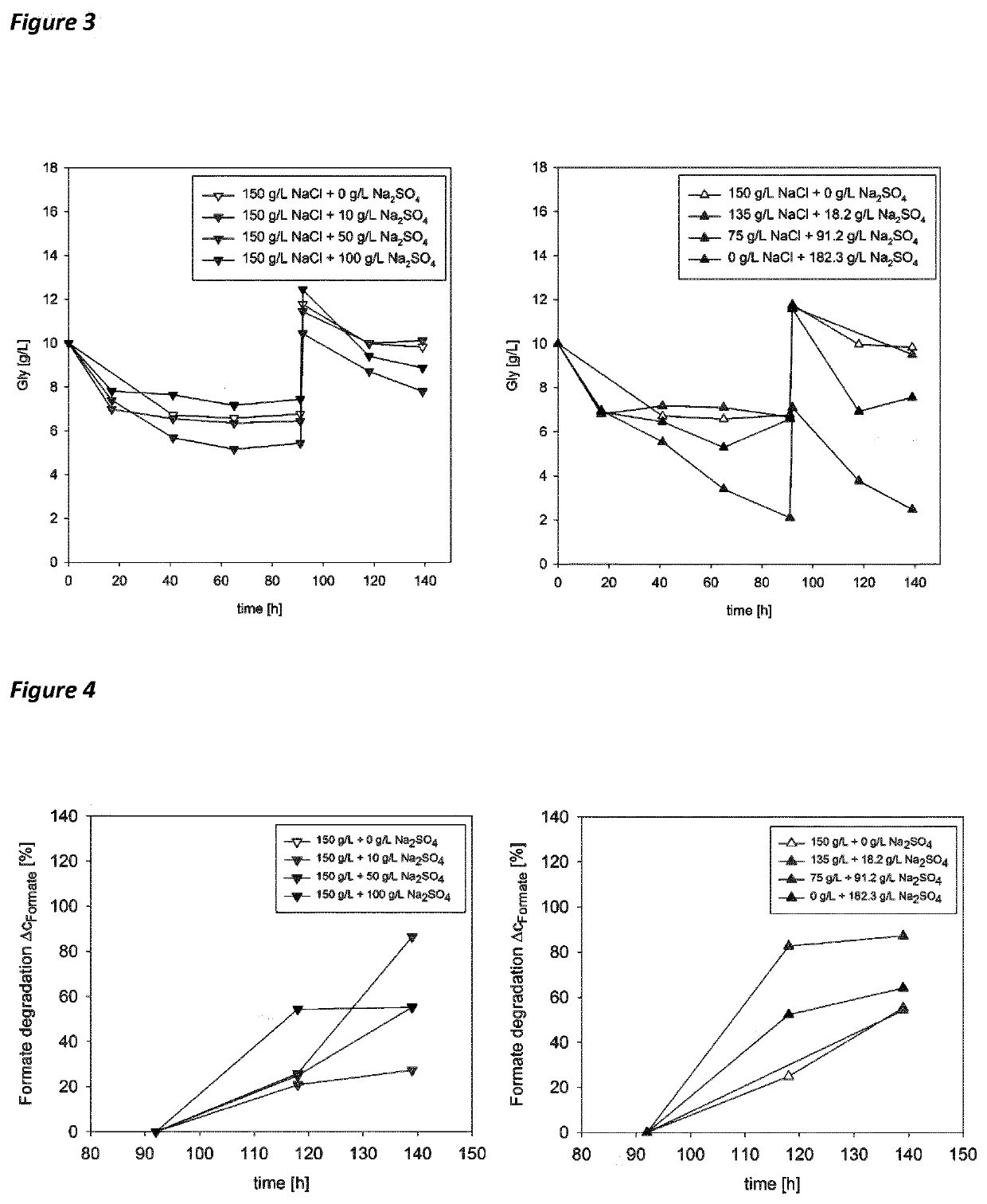Recycling of alkali sulfate rich waste water by biological pre-treatment with an extreme halophilic organism
a technology of halophilic organisms and waste water, applied in biological water/sewage treatment, water/sludge/sewage treatment, chemical apparatus and processes, etc., can solve the problems of high energy and/or chemicals, complex methods, and high dilution requirements
- Summary
- Abstract
- Description
- Claims
- Application Information
AI Technical Summary
Benefits of technology
Problems solved by technology
Method used
Image
Examples
example 1
n of Sodium Sulfate in Combination with Sodium Chloride
[0125]Haloferax mediterranei (DSM 1411) is an extreme halophilic archaeon which requires a minimum of 140 g / L NaCl for growth. Optimal growth is reported for concentrations of 170 g / L NaCl. The experiments described in this example should answer the following questions:[0126]1) Can HFX tolerate high concentrations of sodium sulfate?[0127]2) Can HFX degrade organic components when sodium chloride in the medium is partly replaced by sodium sulfate?[0128]3) Can HFX degrade the components glycerol, phenol and formate in sulfate rich waste water?
[0129]For part 1) of the experiment HFX was cultivated in medium containing 150 g / L sodium chloride and sodium sulfate in concentrations of 0 to 100 g / L. In part 2) the sodium chloride in the medium was replaced by sodium sulfate. Because Na2SO4 contains two sodium molecules, each mol of NaCl was replaced by 0.5 mol Na2SO4. In part 1) and 2) glycerol is used as substrate. A successful TOC red...
example 2
of Sodium Sulfate Concentration in the Medium
[0135]1) Can Haloferax mediterranei tolerate high concentrations of 50-400 g / L sodium sulfate without any NaCl?[0136]2) Can HFX degrade organic components (e.g. glycerol, phenol) in sodium sulfate rich medium without any NaCl?
[0137]For part 1) of the experiment, instead of sodium chloride different concentrations of sodium sulfate were added to the synthetic HFX medium. Due to the maximum solubility of 480 g / L at 37° C., sodium sulfate was added in concentrations of 50-400 g / L. Glycerol was used as carbon source in a concentration of 2 g / L. A successful TOC reduction is shown, when the glycerol concentration is decreased by the cell's metabolism during 5 days of cultivation.
[0138]When the glycerol was fully degraded at 96 hours, one shake flask of every double determination was pulsed with 0.1 g / L phenol and 2 g / L glycerol as second substrate. The second shake flask was pulsed with 2 g / L glycerol. The HPLC analysis should show the degrada...
PUM
 Login to View More
Login to View More Abstract
Description
Claims
Application Information
 Login to View More
Login to View More - R&D
- Intellectual Property
- Life Sciences
- Materials
- Tech Scout
- Unparalleled Data Quality
- Higher Quality Content
- 60% Fewer Hallucinations
Browse by: Latest US Patents, China's latest patents, Technical Efficacy Thesaurus, Application Domain, Technology Topic, Popular Technical Reports.
© 2025 PatSnap. All rights reserved.Legal|Privacy policy|Modern Slavery Act Transparency Statement|Sitemap|About US| Contact US: help@patsnap.com



